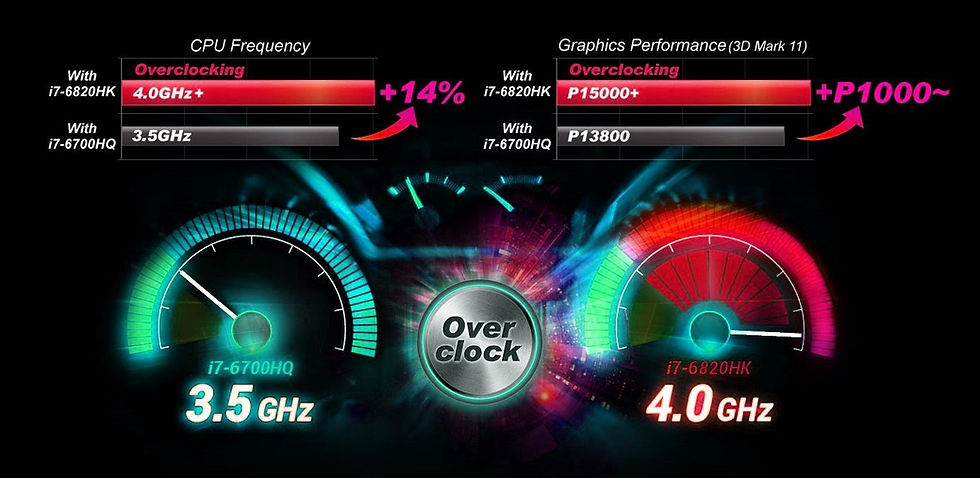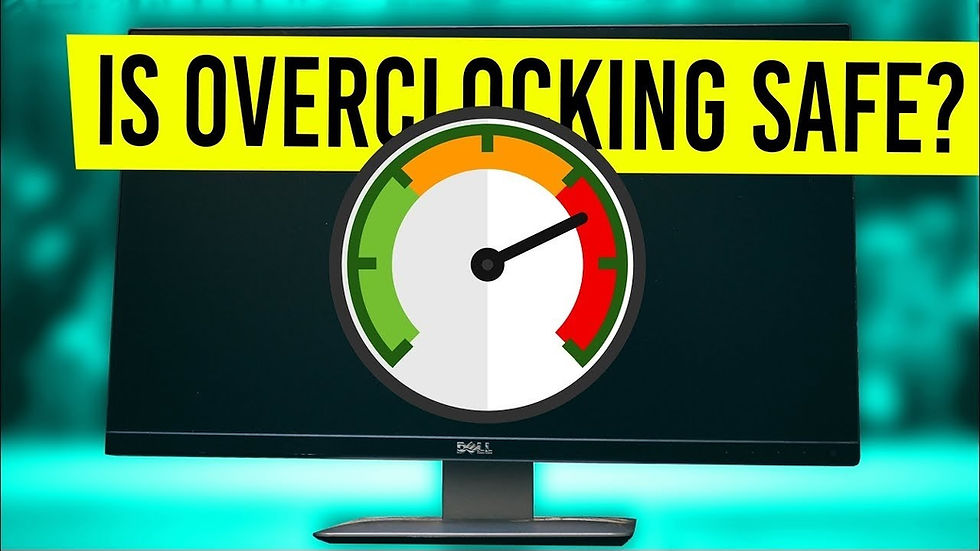How To Overclock Monitor (Complete Guide 2022)
- Nick
- Nov 23, 2021
- 4 min read
Updated: Sep 20, 2022
How to overclock monitors and why to do it? This is a question that many people ask themselves. Knowing how to overclock monitors will help you optimize your PC's performance and even reduce the CPU load.
What is Overclocking?
First of all, you should find out what overclocking is. Overclocking means the process of making computer components, like motherboard, CPU, or GPU (graphics card), run faster than their standard specification. By overclocking the monitor, you can get better performance for your PC.
However, overclocking will reduce the lifetime of these components since they are pushed to work beyond their usual limits. If you want to overclock your monitor, you should know that it's not good for the display's lifespan.
By overclocking the monitor, you may damage your hardware. Some motherboards, like the AM3 motherboards, support overclocking natively to an extent, but still, proceed with caution!

What Can I Overclock?
You might be wondering what else can you overclock besides your CPU and your GPU in a PC? You can also overclock the monitor, which results in better performance, reduced GPU load, and smoother images. Of course, the cons of the overclocked monitors are the shorter lifetime of display hardware and possible damage to its pixels or controller.
You can overclock any monitor type - LCDs (TFT panels and CCFL), OLEDs, LEDs... Even some older plasma TVs! Overclocking is also available on laptop displays, but it's more complicated than desktop monitors because their cooling system is not as effective as it is on desktop.
Remember that changing the frequency of a monitor will wear it out very quickly. You'll have to purchase a new one after just one year instead of four or more years like usual.
Now that we've clarified how important it is to know beforehand the danger of overclocking, let's move on and discuss how to overclock monitors.
Methods Of Overclocking Your Monitor
There are two main ways that are both simple, but they require additional hardware:
Overclocking Using a Third-Party App
The first method requires one of these graphics cards:
Nvidia GeForce 2, 4 Ti , 6800GT, 7300GT or 9800GTX. ATI Radeon X1300XT, X1800XL or X1900XT.
These video cards allow you to change the monitor's frequency via software and therefore don't stress out the monitor. Here is how to overclock monitors using this method:
Step 1 - Download and install RivaTuner.
Step 2 - Start it and select your monitor from the list on the left-hand side. The image below shows how it should look like:
Step 3 - Now, we need to open our Nvidia or ATI control panel, so go ahead and open it.
Step 4 - Now open your Nvidia or ATI control panel again, and this time go to the overclocking menu option. The image below shows how it should look like:
Step 5 - When you are in the overclock menu, increase your monitor's frequency by one step (e.g., if you want 85 Hz, then select 86 Hz) and click on apply.
Wait for a few seconds until RivaTuner updates its data, and if it does not match what is shown in the monitor's menu, you’ve done something wrong, so just lower the frequency back by one notch. After that, just exit all menus and enjoy your new refresh rate!
Manual Overclocking And Why You Should Be Careful With It
If you don't want to use the third-party software, your monitor will have to be adjusted manually, which is a lot more complex and requires a good amount of knowledge about this topic.
An excellent example of such a monitor would be Acer AL2216W, whose maximum frequency is 85 Hz via OSD. Still, you can crank it up to 100 Hz if we change some parameters in Windows' registry! After doing these steps, your computer should automatically set new timings for your monitor, and thus, it will be overclocked to 85 Hz.
(If you want to know more about what Hz, is and how it relates to your monitor´s refresh rate, check out our article here.)
The main problem with this approach is that you need a lot of knowledge about your monitor and how overclocking works. If you do not know what frequencies your monitor supports or if there are any changes in its behavior after the frequency change, we recommend you don't touch any settings. All these steps might end up messing up both your monitor AND Windows, as well as cause permanent hardware damage, which no one wants!
Is Overclocking your Monitor Safe?

It might seem that overclocking a monitor is too dangerous because your risk damaging your display, cause screen tearing, or even worse - lower its lifetime utility. The truth is that it's not so simple.
Overclocking monitors can reduce their lifetime, but this applies mainly to plasma TVs, CCFL LCDs, and older LED backlighted models, which are not as effective as modern displays at handling frequency changes. You may also read some opinions that if you overclock the monitor, then the number of dead pixels will increase.
The fact is that the pixel failure rate is mostly determined by other factors like usage, temperature, or power supply voltage rather than frequency change.
Overall, overclocking a monitor will only speed up the pixel response and increase your refresh rate but won't change anything else. However, suppose you are looking for the best performance.
In that case, there are other ways to get them, like buying a good display or using professional tweaking utilities which allow you both to overclock the monitor AND adjust it so that it performs at its maximum potential! Now have fun with overclocking your preferred monitor!
There are other ways to get the most of your computer as well, check out our tips on how to improve your laptop's performance, or how to free space in your macbook.
If you enjoy sim racing or flight sim games and want to tinker with your monitor a bit more, learn how to do head-tracking on our article here. You can also learn how to overclock your controller or mouse in our article here.




Comments